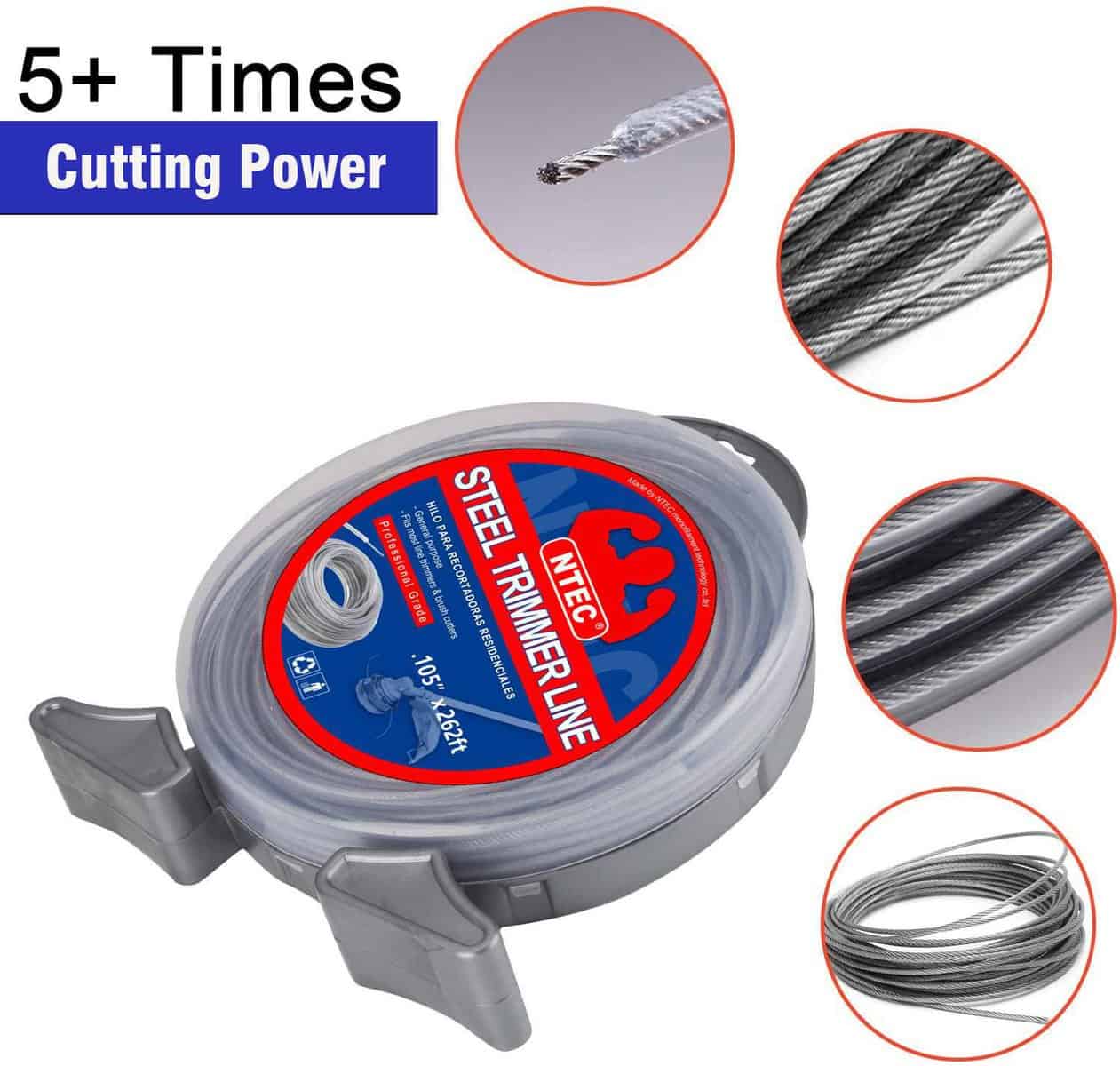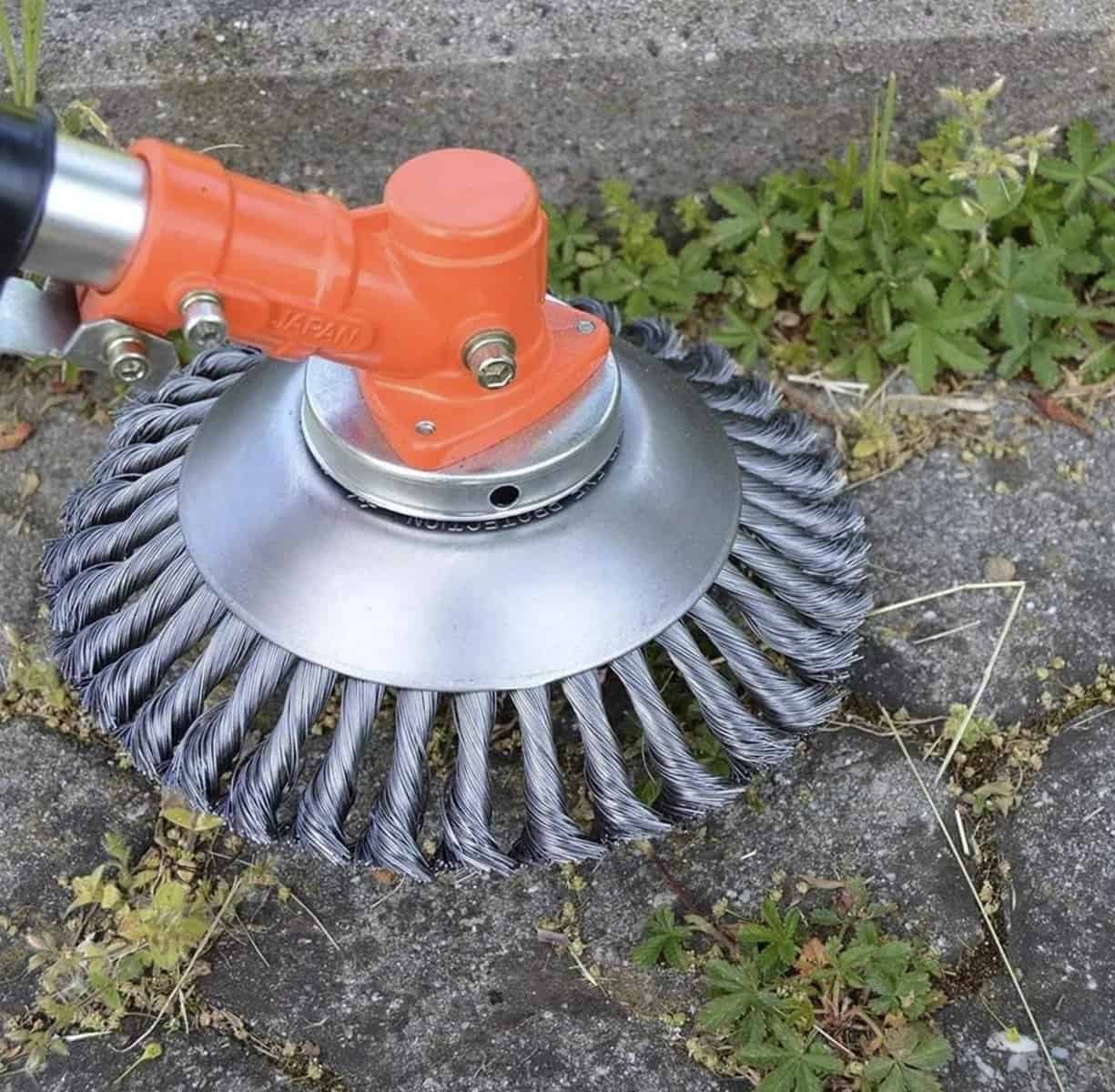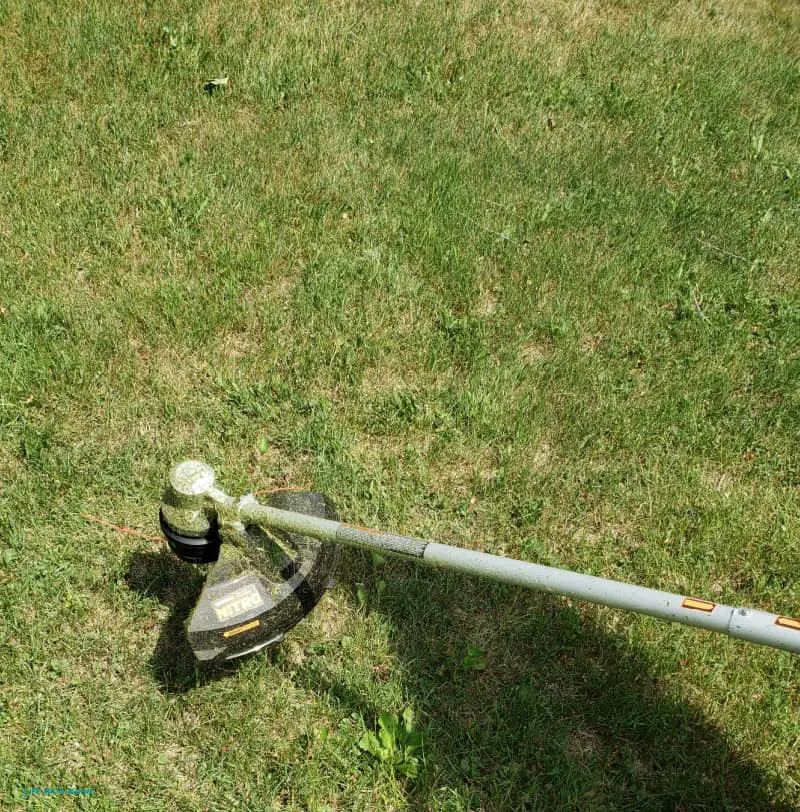Hi there!
Ever wondered if you can put metal wire in your string trimmer? You’re not alone. Like many lawn owners, I’ve also pondered this question and, after exhaustive research, found it’s generally ill-advised to use copper wire or any kind of metal in a weed whacker due to safety issues and potential damage.
This article will explore why using metal wire might not be the best option, review the viability of brush cutter blades on strimmers and present some effective alternatives for your trimming needs.
Intrigued? Let’s dive right in!
Contents
Key Takeaways
- Using metal wire in a string trimmer is not recommended due to wear, breakage, safety concerns, and ineffectiveness compared to other cutting options.
- Manufacturers explicitly caution against using metal wire in trimmers due to the increased risk of injury and damage.
- Safety concerns with using metal wire include the potential for high – speed projectiles and damage to property or landscape features.
- Alternatives for string trimmers include using nylon string or line, considering stronger trimmer lines made from reinforced materials, and exploring different cutting attachments like brush cutters or lawn edging shears.
Can I Put Metal Wire In My String Trimmer?
Using metal wire in a string trimmer is not recommended due to the potential for wear, breakage, safety concerns, and ineffectiveness compared to other cutting options.
Potential wear and breakage of metal wire
Using metal wire in your string trimmer might sound like a great solution for tackling heavy brush, but it’s not without its risks. The flexing motion can lead to rapid wear and breakage of the metal wire.
As I’ve discovered through my years as a seasoned lawn owner, these pieces of broken-off wire aren’t just inconvenient—they pose serious hazards. You could inadvertently launch these sharp fragments at high speeds, risking injury to yourself or others nearby.
Additionally, compromised wires can hamper the smooth operation of your tool and may even damage the motor over time. So while it’s tempting to opt for what seems like added toughness with metal wire, there is more at stake than just maintaining your lawn aesthetics; safety should always come first!
Recommendations against using wire in trimmers
Contrary to what some might believe, using metal wire in your string trimmer isn’t a smart choice. In fact, most manufacturers explicitly caution against it due to the increased risk of injury and damage.
It’s important to understand that metal wire, even something as robust as copper wire, doesn’t hold up well when used in this capacity. Miles away from matching the durability you’d get from proper trimming line.
Moreover, let’s talk about safety concerns which should never be compromised for any reason. The use of wire could result in serious harm if pieces break off during use because these tiny fragments can easily turn into dangerous projectiles at high speeds.
Additionally they can cause unnecessary damage to landscape features around your yard by cutting deeper than intended or damaging trees and plants irreversibly.
Therefore, while it might be tempting to see if you can put metal wire in your string trimmer instead of purchasing a new line, resist the urge. Your safety is paramount plus professional advice strongly discourages this practice considering all associated risks.
Safety concerns with using metal wire
Safety should always take center stage when using any power tool, and string trimmers are no exception. Although you might be tempted to use metal wire in your string trimmer for a supposedly more robust cutting experience, the potential risks significantly outweigh the perceived benefits.
Such an approach can easily turn a harmless gardening chore into a dangerous mission.
Using metal wire subjects you to several safety concerns, from personal injury to property damage. A chunk of broken-off metal wire could act as a high-speed projectile, risking harm not just to you but also bystanders or even wildlife nearby.
The same broken wires can ricochet off hard surfaces like sidewalks or trees, damaging them along with windows or other vulnerable parts of your home. It’s simply not worth gambling with these kinds of risks.
Trust me; I talk from years of hands-on experience and countless narratives from lawn owners who learned this tough lesson too late.
To avoid such problems altogether, it’s best to stick with options designed specifically for string trimmers—your nylon strings or stronger trimmer lines that bring both durability and safety together in one package.
Read more: Why Does My Trimmer Line Keep Coming Out?

Can I Put A Brush Cutter Blade On A Strimmer?
Yes, you can put a brush cutter blade on a strimmer to handle more challenging yard tasks. If your yard requires a more heavy-duty solution, the plastic string blade or metal grass blade may not be sufficient.
Converting your strimmer to a brush cutter can provide better performance and efficiency when dealing with tougher vegetation.
To convert your string trimmer to a brush cutter, you have two options: installing a brush cutter attachment or replacing the trimmer head with a blade. There are different types of brush cutter attachments available, including universal steel wire brush trimmer heads and specific brand models like the Stihl wire brush trimmer head.
Some people choose to use steel wire trimmer heads for their strimmers as they offer improved cutting performance and durability. You can also look for steel wire trimmer head reviews to gather insights from other users who have used these attachments successfully.
If you’re in search of unbreakable trimmer line or a wire brush for your strimmer, you can explore options at home improvement stores like Screwfix. Another alternative is the rusting weeding wheel from Stihl, which can assist in derusting and weeding tasks.
Remember to ensure that the brush cutter blade or wire trimmer head is compatible with your specific strimmer model, such as Ryobi. Always follow the manufacturer’s instructions and safety guidelines when converting or modifying your strimmer for optimal performance and safety.
Read more: Why Your Trimmer Head Spins at Idle Wildly? Find out the Reasons

Alternative Options for String Trimmers
When it comes to alternatives for string trimmers, there are several options to consider. From using nylon string or line to exploring stronger trimmer lines and other cutting attachments, there are ways to enhance your trimming experience.
Discover these alternative options that can provide better results in your lawn maintenance routine. Read More..
Use of nylon string or line
I have found that using nylon string or line is a popular choice for string trimmers. This material offers flexibility and durability, making it suitable for most trimming tasks. However, it’s important to note that nylon strings tend to wear out quickly on heavier-duty jobs.
To address this issue, some manufacturers offer stronger trimmer lines made with reinforced materials like steel or other polymers. These options can provide additional strength and durability for those tough trimming situations where a regular nylon line might not be sufficient.
It’s worth exploring these alternative options if you frequently encounter thicker vegetation or have more demanding trimming needs.
Consideration of stronger trimmer lines
When choosing a trimmer line for your string trimmer, it’s important to consider the strength and durability of the line. Here are some factors to keep in mind:
- Thicker lines: Thicker trimmer lines, such as 0.095 or 0.105 inches, offer increased strength and cutting power. They can easily tackle tougher vegetation, including thick grass and weeds.
- Material composition: Look for trimmer lines made from high-quality materials like nylon or copolymer. These materials are known for their durability and resistance to breakage.
- Shape: The shape of the trimmer line can also impact its cutting performance. Square or twisted lines tend to be stronger and more efficient at cutting through dense vegetation compared to round lines.
- Engine power: Keep in mind that using thicker trimmer lines requires a more powerful engine that can handle the increased resistance. Make sure your string trimmer is compatible with thicker lines before making the switch.
- Trimmer line size compatibility: Check your string trimmer’s user manual or consult with the manufacturer to determine the recommended range of trimmer line sizes for optimal performance and safety.

Exploring other cutting attachments
As a lawn owner, it’s always important to explore different cutting attachments for your string trimmer to ensure efficient and effective trimming. Here are some alternative options to consider:
- Brush Cutters: If you have dense vegetation or tough weeds, a brush cutter attachment can be a game-changer. These blades are designed to handle heavier vegetation and provide a cleaner cut compared to nylon strings.
- Lawn Edging Shears: For precise edging along sidewalks, driveways, or flower beds, lawn edging shears can be a great addition to your string trimmer. They allow you to create neat borders and define the edges of your lawn with ease.
- Scythes and Sickles: These traditional hand tools are perfect for those who prefer a more manual approach. Scythes and sickles are great for cutting long grass in larger areas or tackling overgrown fields.
- Mowers: Depending on the size of your lawn, using a lawnmower might be a more suitable option than a string trimmer. Mowers provide an even cut across larger areas while saving time and effort.
- Shovels: While not technically a cutting attachment, shovels can come in handy for removing stubborn weeds or digging out unwanted plants from your lawn. Consider having a good quality shovel as part of your gardening arsenal.
Conclusion
In conclusion, it is highly recommended not to put metal wire in your string trimmer. Metal wire can wear and break easily, posing safety risks. Instead, consider using nylon string or stronger trimmer lines as alternative options for effective trimming.
Remember to prioritize safety when choosing cutting attachments for your trimmer.
FAQs
1. Can I use metal wire in my string trimmer instead of nylon string?
It is not recommended to use metal wire in a string trimmer as it can cause damage to the machine and pose a safety risk. Metal wire is heavier and can create more resistance, which may lead to motor burnout or other mechanical issues.
2. What type of string should I use for my string trimmer?
Most string trimmers are designed to be used with nylon strings specifically made for trimming grass and weeds. These strings are lightweight, flexible, and durable enough to handle the demands of cutting vegetation without damaging the trimmer or surrounding objects.
3. Are there any alternatives to using nylon strings in a string trimmer?
Yes, there are alternative options available such as pre-cut plastic blades or serrated edge attachments that can be installed on certain models of string trimmers. These alternatives provide effective cutting while reducing the risk of damaging the equipment or causing injury.
4. What precautions should I take when using a string trimmer?
When using a string trimmer, it is important to wear appropriate protective gear such as safety glasses, long pants, closed-toe shoes, and gloves. Clear the area of debris before starting and avoid trimming near rocks, fences, windows, or other fragile items that could be damaged by flying debris. It’s also essential to follow the manufacturer’s instructions for operating and maintaining your specific model of string trimmer for optimal performance and longevity.





